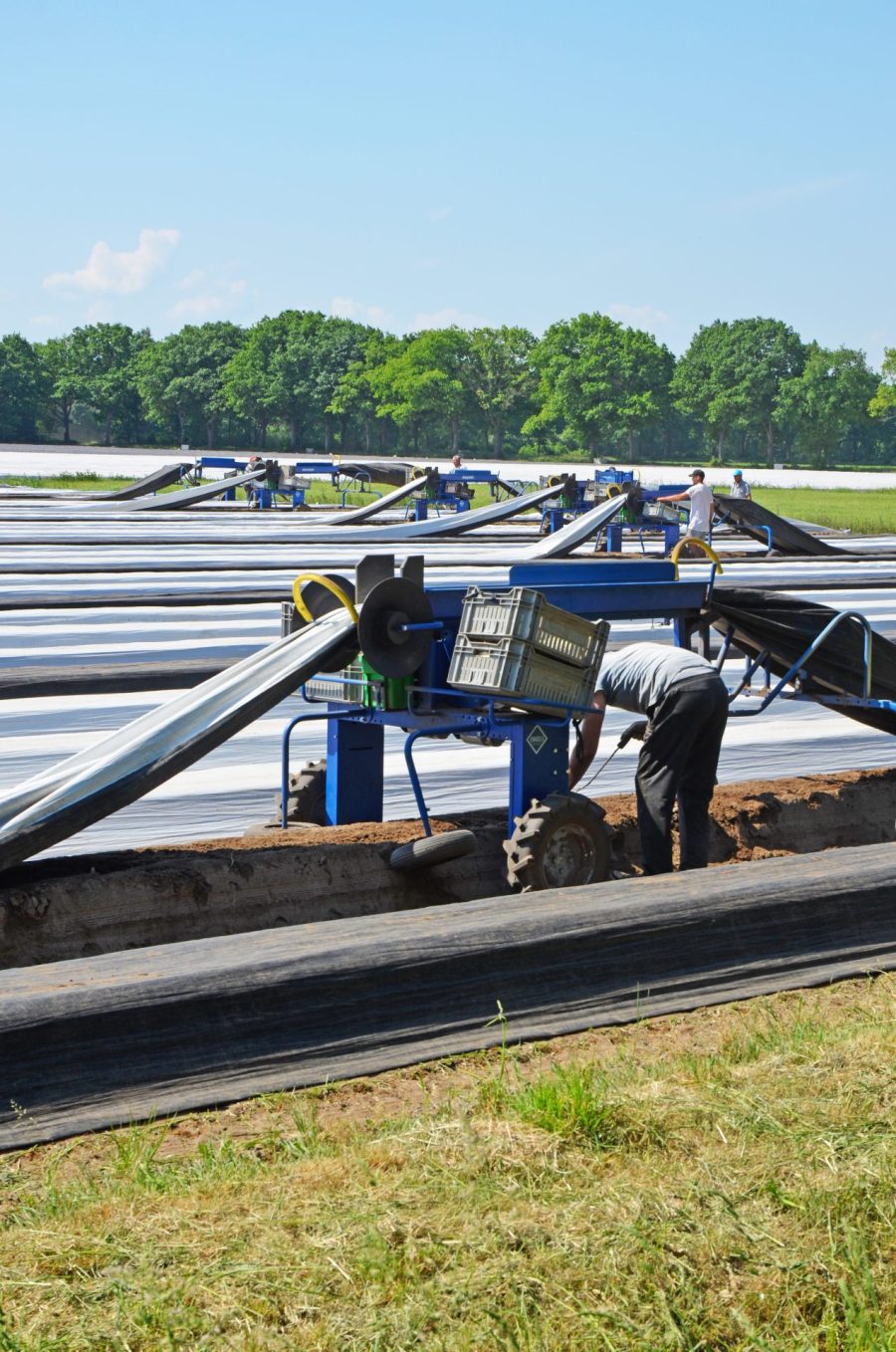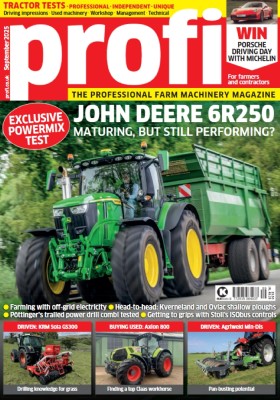A 48-strong fleet of electrically-powered Spiders are allowing Dutch grower De Wit to slash harvesting costs by nearly 50%.
KEEPING IT BRIEF
- Around 15,000 Spider machines have been produced to date
- One machine is needed per hectare
- Front wheels powered by electric motors
- Unladen weight is 300kg (excludes battery)
- Price is €5,000
The white asparagus area is estimated to total around 33,800ha in Europe. Germany has the largest area (17,640ha), followed in second place by France (4,200ha) and the Netherlands (2,970ha).
Five years ago, the Dutch area reached a peak of around 3,800ha. However, labour costs have increased by 50% in that time, forcing many growers to pull the pin. Two thirds of the remaining Dutch area is concentrated in the southern province of Limburg, and another third in Brabant. Located at Veghel, not far from Eindhoven, De Wit has 54ha of outdoor crop (and 6.0ha of greenhouse asparagus) in a radius of 10-15km around the farm.
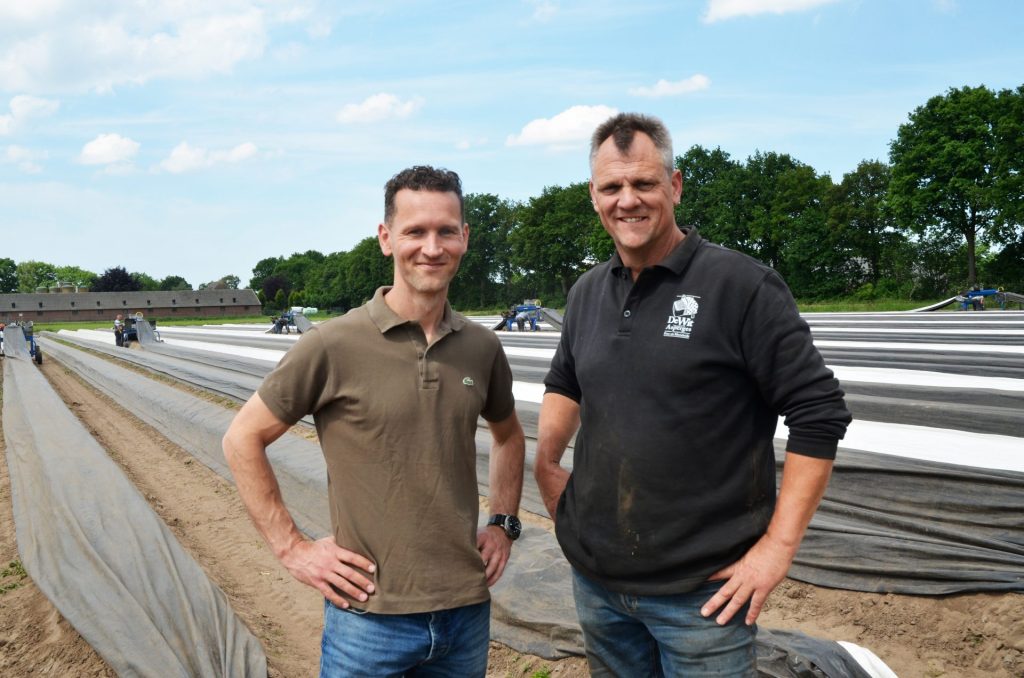
One of the top 20 growers in the country, De Wit harvests greenhouse asparagus from the end of February to mid-April. This dovetails into the outdoor season when 80-85 seasonal staff (mainly east European) are needed from mid-April until the end of June. Some of these work in the sorting and grading areas, but most are in the fields harvesting the white gold.
No time for cobwebs
De Wit is a longstanding user of the Asparagus Spider (AspergeSpin) A1. Made by Dutch manufacturer Engels Machines, Marc de Wit bought the first batch of five machines in 2012, and in subsequent years increased this to 48.
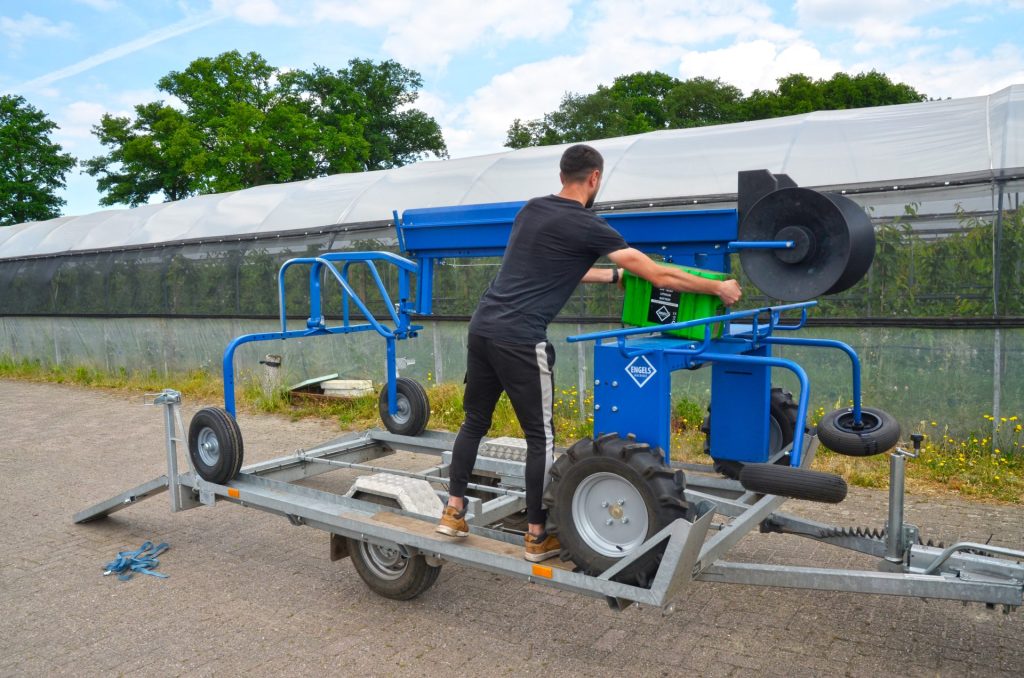
Spears are cut every one and a half days for two months with a total of around 40 passes per field. Working 10 hours day for three to four months, some of the grower’s Spiders clock up 400-500 hours a season. Others only work for six weeks but they are still needed.
Our visit was towards the end of the harvesting campaign in the last six fields of the season where half of the De Wit fleet of 48 machines were still working. There were 10 in action in the grower’s largest asparagus field; a 7.5ha block planted three years ago.
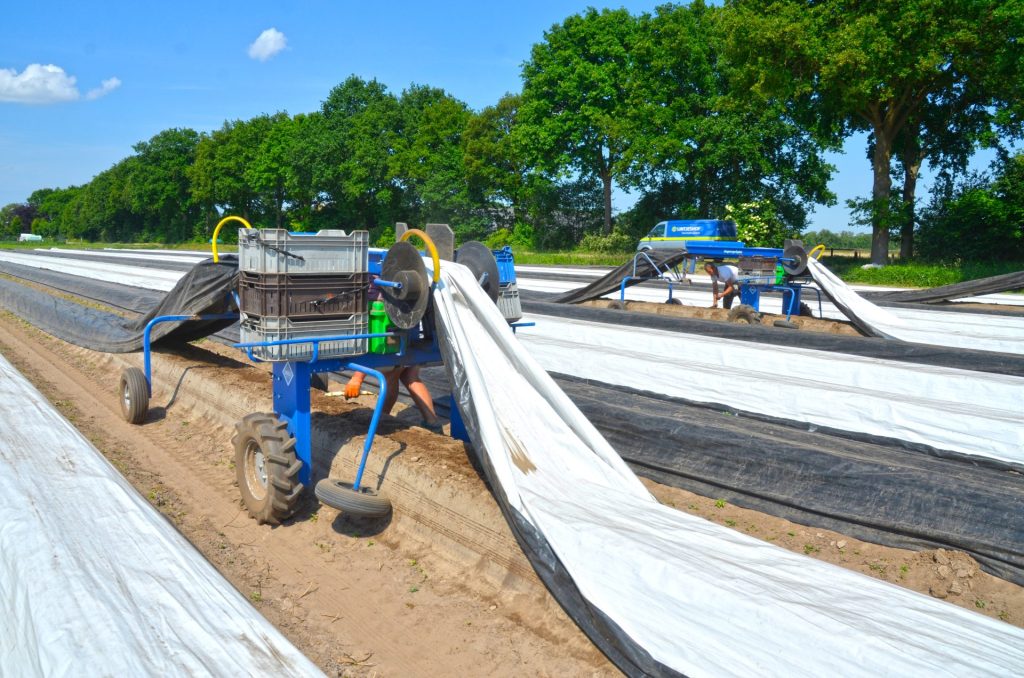
The delicate spears are still cut manually. What the Spiders do is make the job much easier. Straddling the bed, a large diabolo roller lifts the plastic from the bed, from where it travels across the top of the machine before being lowered back onto the bed.
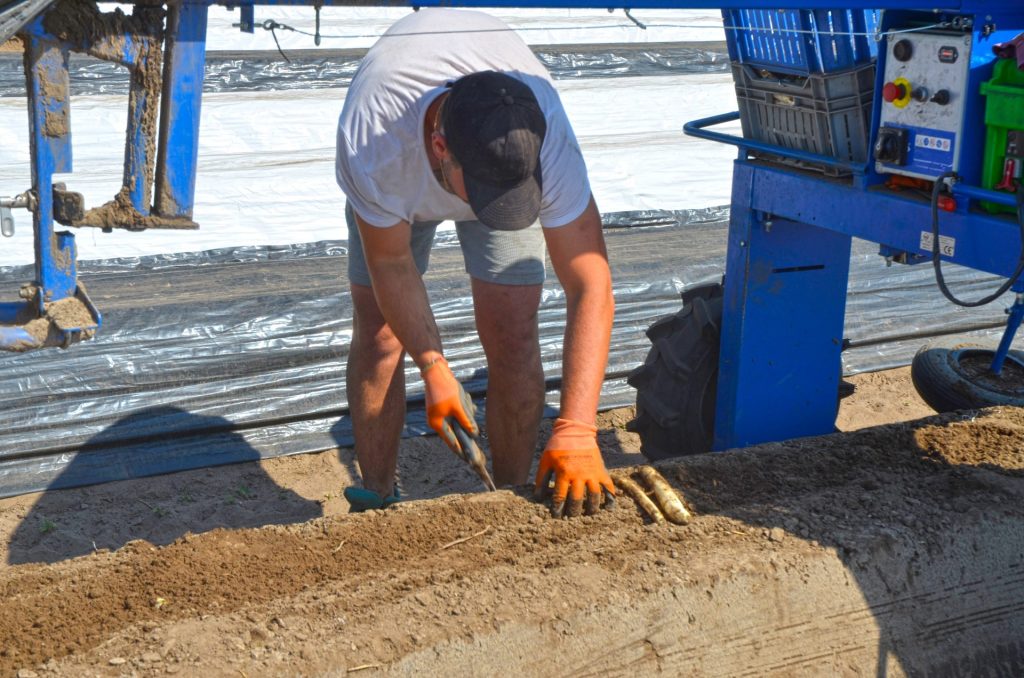
Made from an all-welded frame, which is blasted and powder-coated, the Spider is both simple and quiet. There is no diesel motor and no complicated electronics. Only the front wheels are powered, each one by a 400w electric motor.
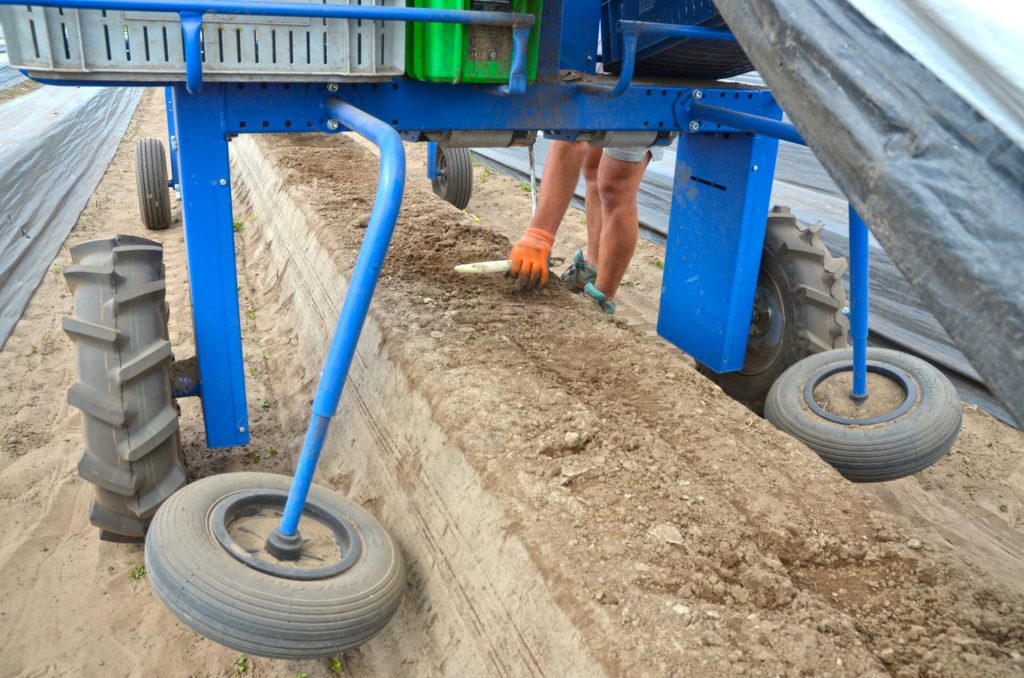
Fresh cluster
At this stage, we must point out that while the Spider is built to last for up to 20 years, the Dutch grower part-exchanged all 48 machines recently for the latest version of the Spider, the A1+. The reason for this is easily explained, and is all about the benefits of the latest model. The main one is the articulated steering, where the frame pivots at the rear end of the chassis to reduce the turning circle on headlands when changing beds.
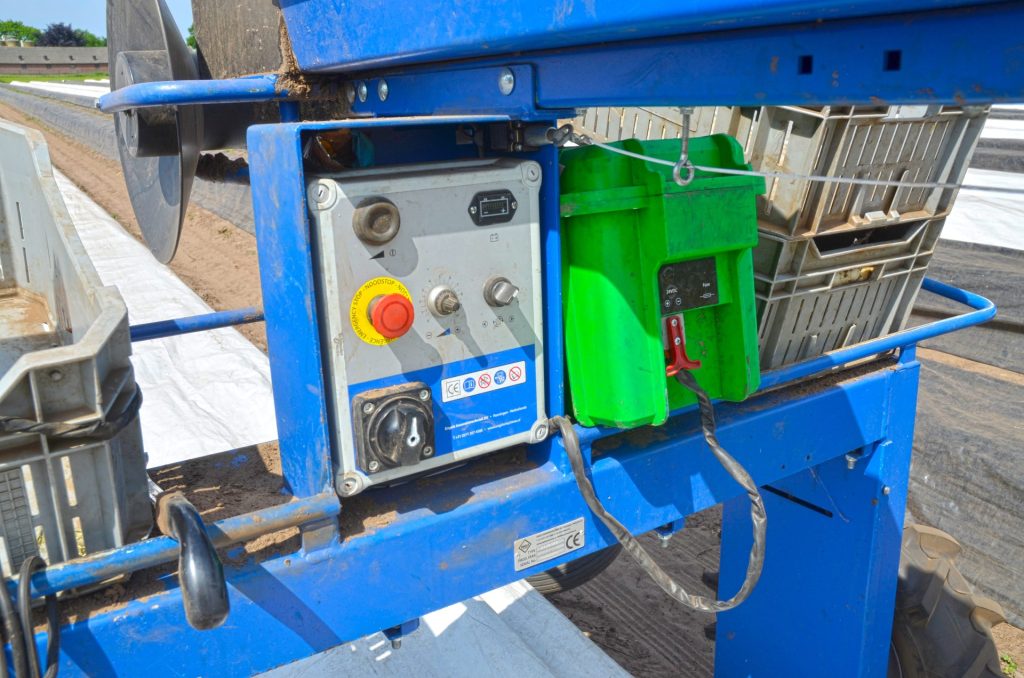
The control box is straightforward. There is an emergency stop button, a speed dial, battery status indictor and newly developed DRive Selector switch. The latter simplifies headland turns by automatically locking one of the 400w front wheel motors depending on whether the machine turns to the left or right, both forward and reverse. Combined with the articulating chassis, this helps to reduce the turning circle.
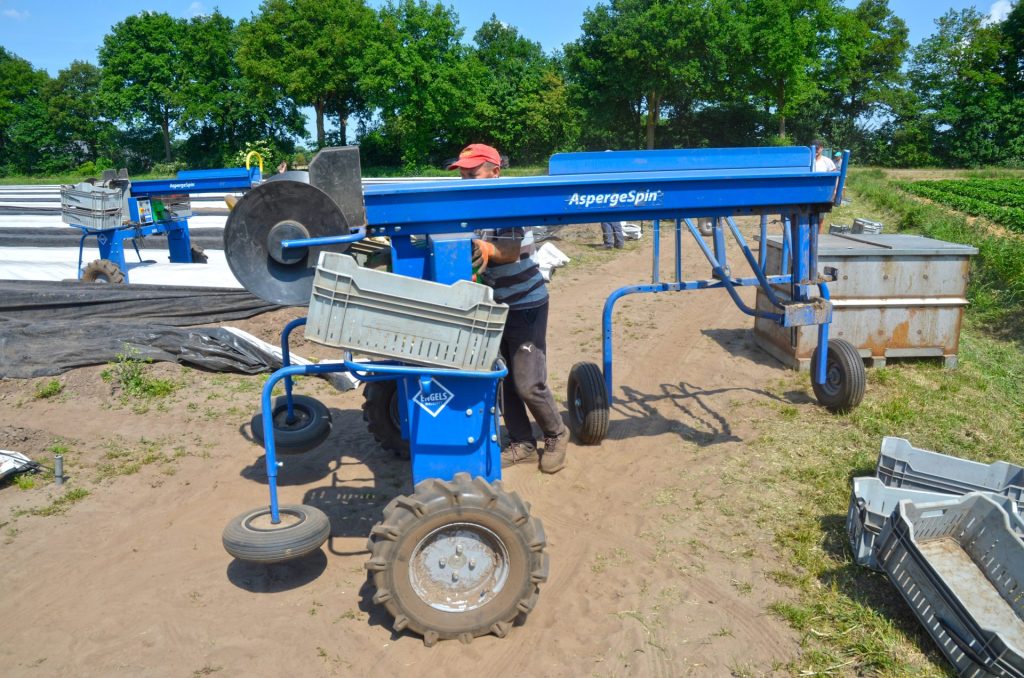
De Wit opted for the 50cm longer chassis A1+, which increases the length to 4.3m. This exposes the bed for a bit longer to give the worker positioned alongside more time to harvest the spears. It depends on the number of them, but working speeds are typically around 700m-800m an hour, and maximum harvesting speed is 1.0km/hr. Forward speed is simply altered by using the speed dial. The top speed is 3.0km/hr. In the row, the harvester is stopped and started by an easy to reach wire suspended along the underside of the frame.
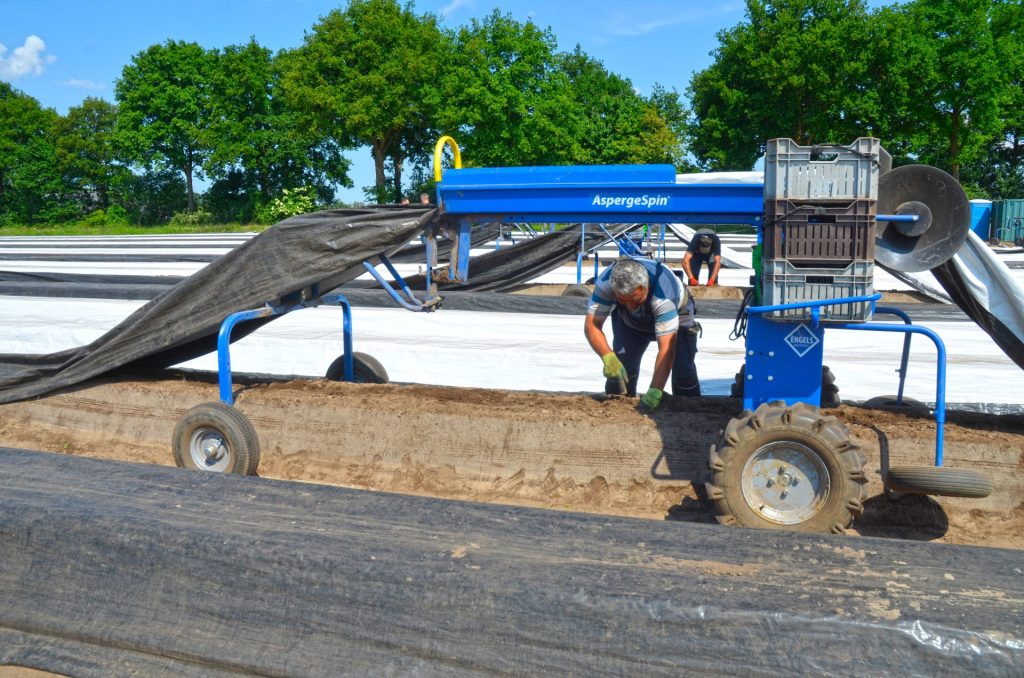
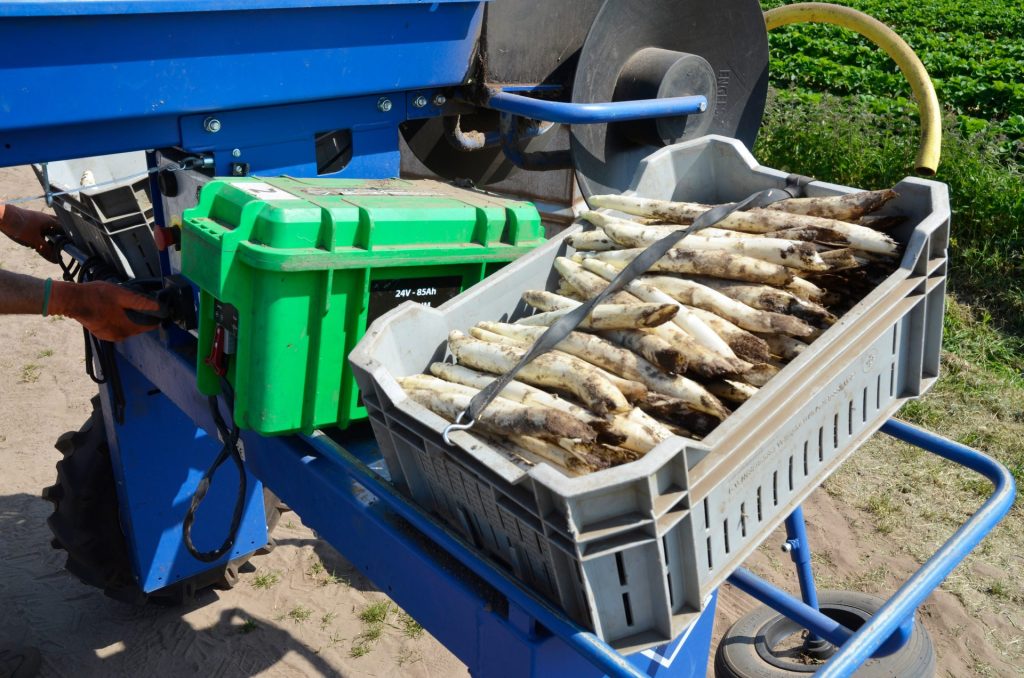
Each Spider is suitable for 1ha, but different crop timings allow it to be used for up to four months. “It can be used on 1.0ha of early crop and then in a second hectare of late crop,” comments director Chris Engels.
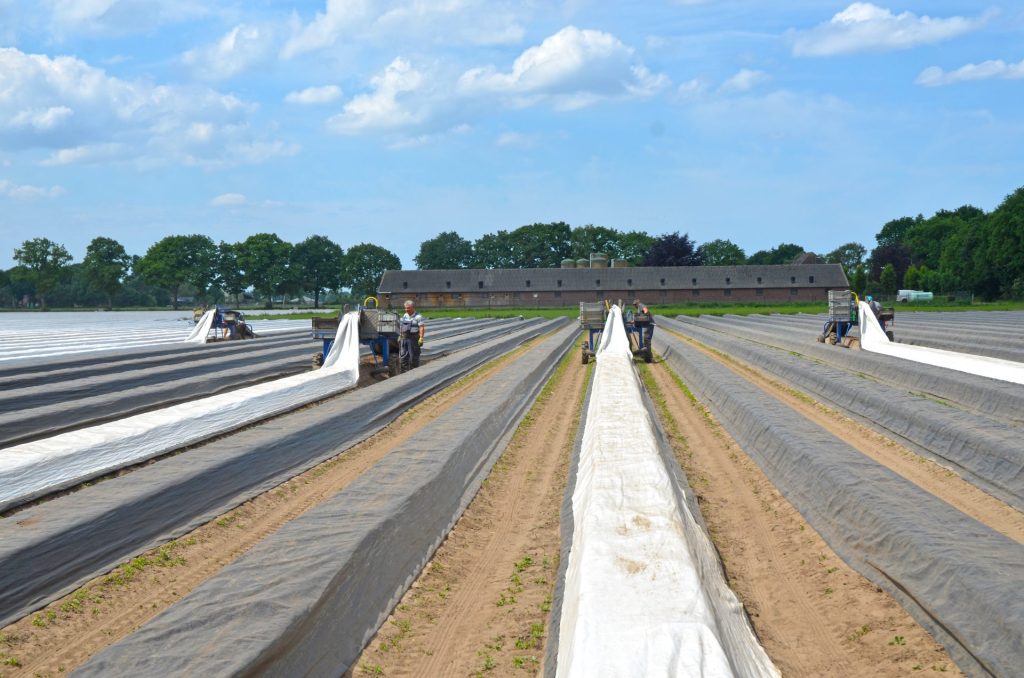
The Spider A1+ is priced at €5,000. The 50cm longer version costs an extra €200. Other options include a rain canopy (€400). There is also a solar-powered option, but most growers prefer to remove the batteries and recharge them back at the farm.
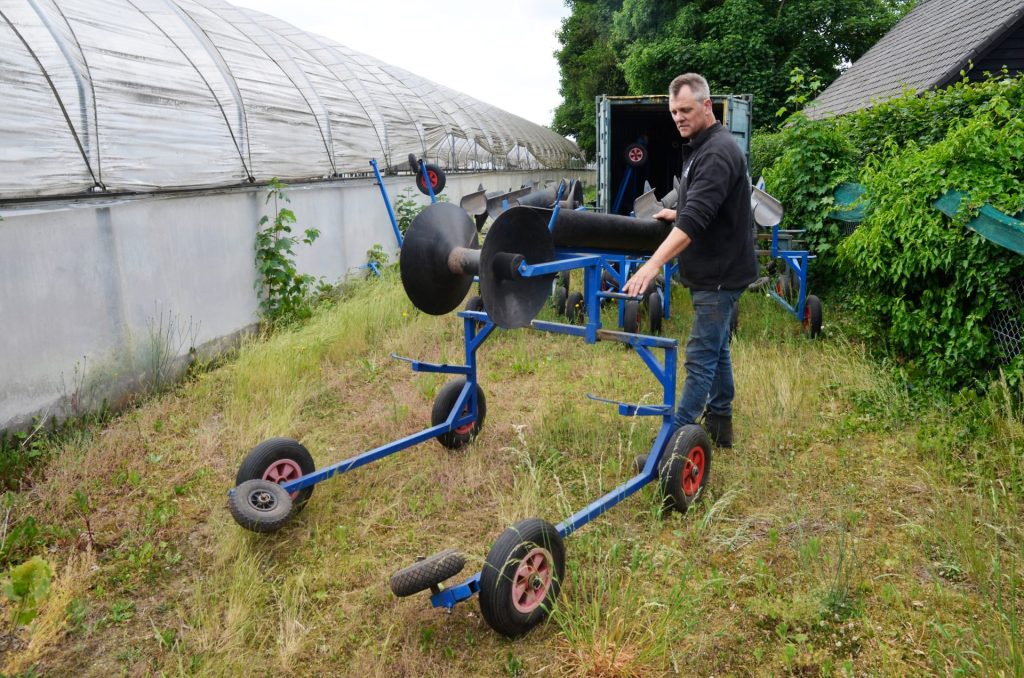
The Spider harvesting sidekick
De Wit relies heavily on migrant labour (mainly from Bulgaria, Romania and Poland) for the four-month season. The first worker who arrived in 2002 is still here today. Looking ahead, Marc is confident he has the right set-up to continue recruiting enough seasonal staff for the foreseeable future. With on-site housing for 85 staff, lunch is taken in the field, but the grower provides a subsidised hot meal in the evening.
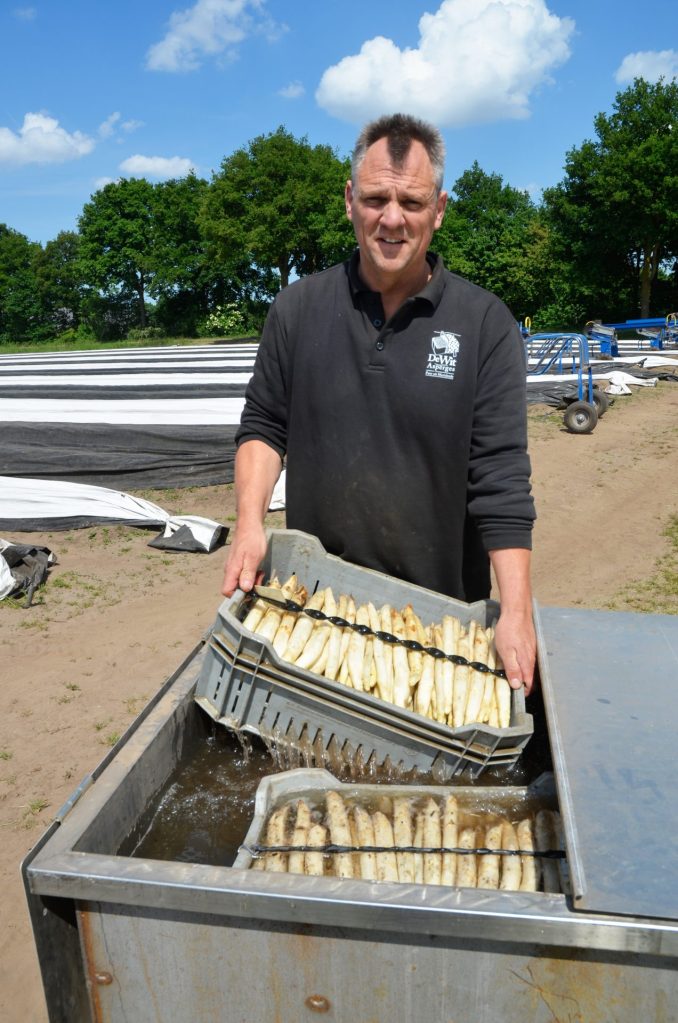
Asparagus is a 10-year crop. With an average annual yield of 8.0t/ha, each hectare theoretically yields around 80t. Renting land is not easy because most owners are not keen to lose a field for so long. While Marc has no plans to increase the asparagus area, he does need to find 5.0-6.0ha of new land a year.
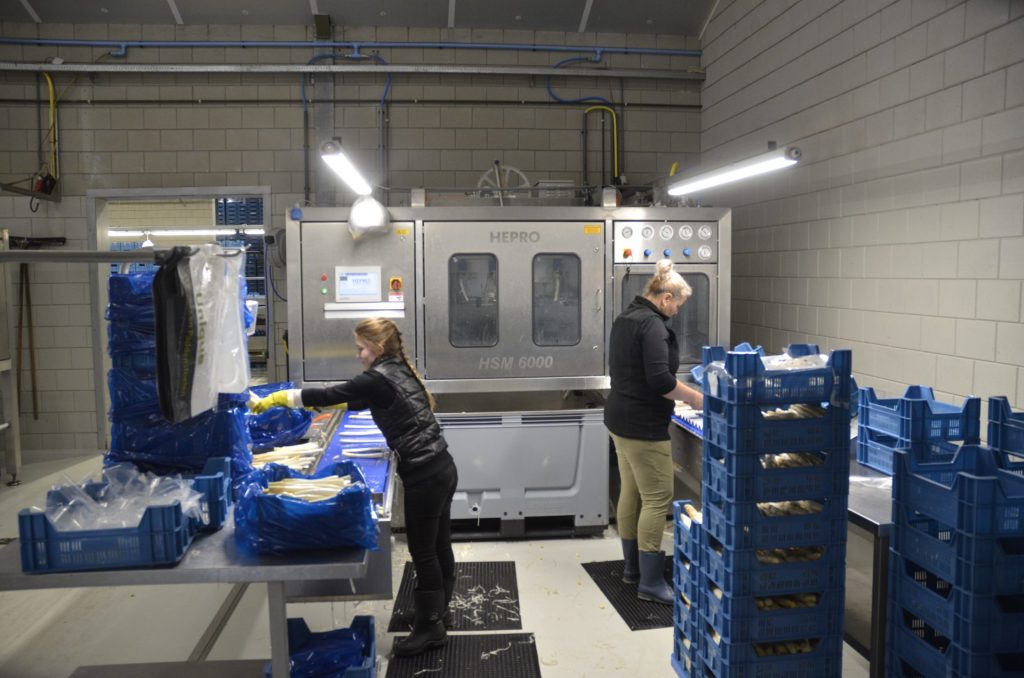
Despite the eye-watering cost of €150,000/ha (€15/m²) in the Veghel area, he managed to secure a 15ha block last year. 5.0ha of this was planted with asparagus this season. 4.5ha is earmarked for next season, and the rest will follow in 2027.
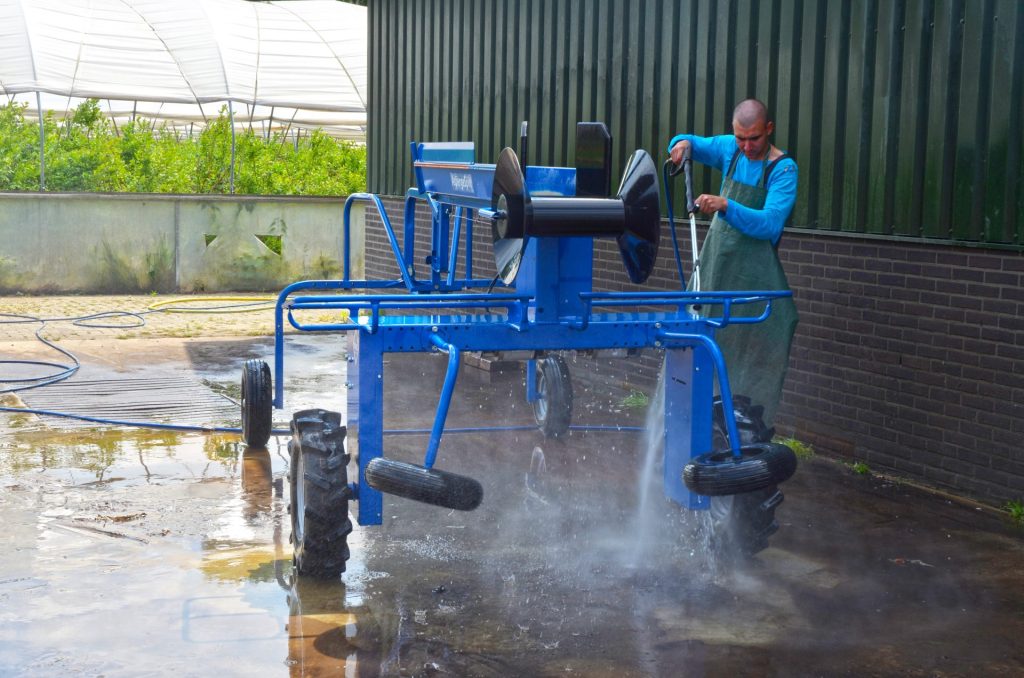
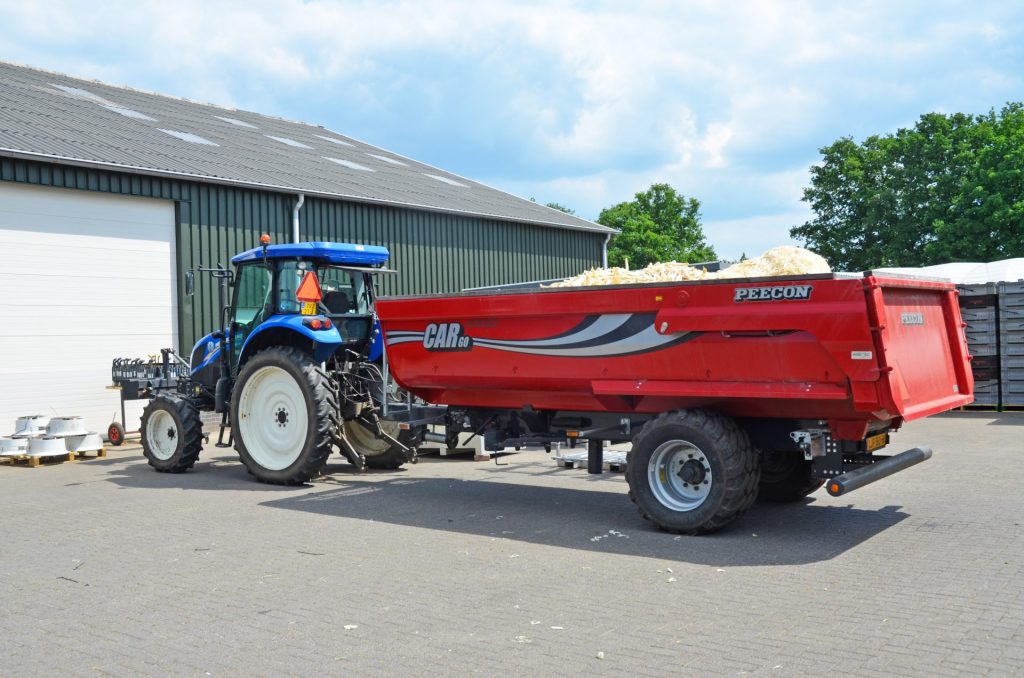
The grower does not sell his crop through the auction, but handles all sales, and in the last 30 years has built up a firm customer base with local retailers and restaurants, and the farm shop is popular with locals.
Steven Vale
For more up-to-date farming news click here and subscribe now to profi and save.

